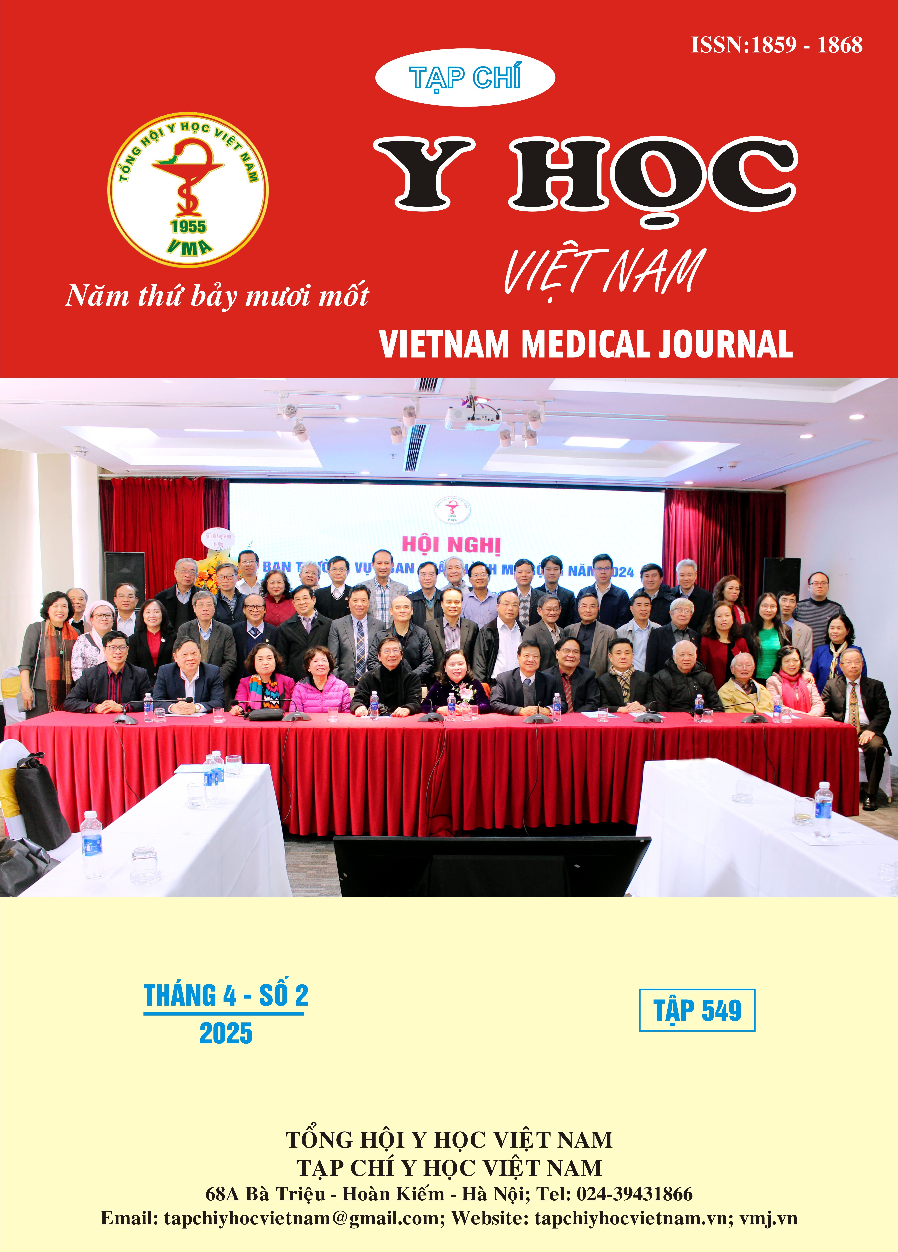SỰ THAY ĐỔI BIÊN ĐỘ VẬN ĐỘNG LƯỠI SAU PHẪU THUẬT GIẢI PHÓNG PHANH LƯỠI Ở NGƯỜI BỆNH NẮN CHỈNH BỊ DÍNH LƯỠI
Nội dung chính của bài viết
Tóm tắt
Mục tiêu: Đánh giá sự thay đổi biên độ vận động lưỡi sau phẫu thuật giải phóng phanh lưỡi của người bệnh nắn chỉnh răng bị dính lưỡi. Phương pháp: Nghiên cứu can thiệp lâm sàng, so sánh trước sau trên 36 bệnh nhân, đánh giá khoảng cách tối đã giữa răng cửa trên và dưới khi há miệng thoải mái (CMO), khoảng cách giữa răng cửa hai hàm tối đa khi kéo dài đầu lưỡi đến nhú răng cửa (TIP), khoảng cách tối đa giữa các răng cửa trong khi thân lưỡi được giữ áp vào vòm miệng (LPS), chiều dài bụng lưỡi tự do theo Kotlow, biên độ vận động lưỡi ra phía trước (TIP/CMO) và ra phía sau (LPS/TIP), mức độ dính lưỡi theo biên độ vận động lưỡi ra trước (TRMR-TIP) và sau (TRMR-LPS) trước và sau phẫu thuật 3 tháng. Kết quả: CMO 48,42 ± 6,281 mm, sau phẫu thuật là 49,78 ± 7,007 mm, TIP trước phẫu thuật là 22,94 ± 4,119 mm, sau phẫu thuật là 30,28 ± 5,348 mm.LPS 19,06 ± 4,635 mm, sau phẫu thuật 3 tháng là 27,44 ± 5,278 mm. Chiều dài bụng lưỡi tự do trước phẫu thuật là 17,75 ± 3,426 mm, sau phẫu thuật 3 tháng là 26,86 ± 5,161 mm. TIP/CMO trước phẫu thuật là 47,76 ± 8,38%, sau phẫu thuật là 61,36 ± 10,176%. LPS/TIP trước phẫu thuật là 39,61 ± 9,35%, sau phẫu thuật 55,60 ± 10,176%. Trước phẫu thuật 100% có giảm TRMR-TIP(độ 2 là 44,4%, độ 3 là 55,6%), sau phẫu thuật tỷ lệ này là 97,2% (độ 1 là 2,8%, độ 2 là 88,9%, độ 3 là 8,3%). Tương tự, 100% người bệnh có giảm TRMR-LPS (độ 2 là 80,6%, độ 3 là 19,4%), sau phẫu thuật tỷ lệ này là 63,9% (độ 2). Sự khác biệt có ý nghĩa thống kê với p<0,01. Kết luận: việc giải phóng phanh lưỡi giúp tăng mức độ, biên độ vận động lưỡi một cách hiệu quả.
Chi tiết bài viết
Từ khóa
dính lưỡi, vận động của lưỡi, giải phóng phanh lưỡi
Tài liệu tham khảo
2. Yoon A., Zaghi S., Weitzman R., et al. (2017). Toward a functional definition of ankyloglossia: validating current grading scales for lingual frenulum length and tongue mobility in 1052 subjects. Sleep Breath Schlaf Atm, 21(3), 767–775.
3. Zaghi S., Shamtoob S., Peterson C., et al. (2021). Assessment of posterior tongue mobility using lingual-palatal suction: Progress towards a functional definition of ankyloglossia. J Oral Rehabil, 48(6), 692–700.
4. Murias I., Grzech-Leśniak K., Murias A., et al. (2022). Efficacy of Various Laser Wavelengths in the Surgical Treatment of Ankyloglossia: A Systematic Review. Life Basel Switz, 12(4), 558.
5. Martinelli R.L. de C., Marchesan I.Q., and Berretin-Felix G. (2012). Lingual frenulum protocol with scores for infants. Int J Orofac Myol Off Publ Int Assoc Orofac Myol, 38, 104–112.
6. Marchesan I.Q. (2005). Lingual frenulum: quantitative evaluation proposal. Int J Orofac Myol Off Publ Int Assoc Orofac Myol, 31, 39–48.
7. Yoon A.J., Zaghi S., Ha S., et al. (2017). Ankyloglossia as a risk factor for maxillary hypoplasia and soft palate elongation: A functional - morphological study. Orthod Craniofac Res, 20(4), 237–244.


